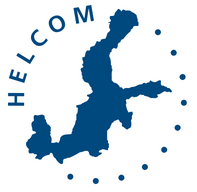Ships’ ballast water and related risk assessment procedure is the topic of a taking place today and tomorrow in Gdansk, Poland, of the dedicated formed by HELCOM and OSPAR. The cooperation between the Baltic Sea and North-East Atlantic areas on regional exemptions for ballast water is necessary because of the international character of shipping and delivers solutions that can also be applied in other regions.As ships’ ballast water may carry alien species which are harmful to the marine environment, the Regional Seas Conventions such as HELCOM and OSPAR have long worked on the issue for ensuring safer practices. The joint harmonized procedure on exemptions has globally been considered a good practice of regional cooperation on ballast water risk assessments, which other regions may use as an example. The method has raised also practical interest in the North American Great Lakes region, where port sampling according to the HELCOM-OSPAR approach has been carried out recently. Four ports in the eastern Great Lakes area – Buffalo, Oswego, Ashtabula and Toledo – have been sampled for alien species using the joint HELCOM-OSPAR method in 2014-2015 by Buffalo State University of New York. One of the issues under debate in the task group, between the participating countries, shipping industry and NGOs, is the revision of the criteria for target species, or species of special interest. Such target species are a key feature in the procedure which aims at assessing in a scientifically justifiable way the risk of deviations from the ballast water practices outlined in the IMO Ballast Water Management Convention. Moreover, with the help of the joint task group, the coastal countries and ship owners have in place since 2013 a common harmonised method and an online tool for identifying low risk routes which might be exempt. The meeting will be chaired by Mr. Henrik Ramstedt, Environmental Specialist at the Swedish Transport Agency.* * * Note for editors:The Maritime of HELCOM, originally established in 1975, identifies and promotes actions to limit sea-based pollution and ways for safer navigation. It also works to ensure enforcement and harmonized implementation of international shipping regulations. Its sub-groups include the HELCOM-OSPAR Task Group on Ballast Water Management (regional dimensions of implementing the IMO Ballast Water Management Convention), Expert group on safety of navigation, Working Group for mutual exchange and deliveries of Automatic Identification System (AIS) data, and HELCOM Cooperation Platform on Port Reception Facilities (PRF). The Baltic Marine Environment Protection Commission, usually referred to as , is an intergovernmental organization of the nine Baltic Sea coastal countries and the European Union working to protect the marine environment of the Baltic Sea from all sources of pollution and to ensure safety of navigation in the region. Since 1974, HELCOM has been the governing body of the ‘Convention on the Protection of the Marine Environment of the Baltic Sea Area’, more commonly known as the Helsinki Convention. * * *For more information, please contact:Hermanni BackerProfessional Secretary for Maritime, Response and Maritime Spatial PlanningHELCOMTel: +358 46 8509199Skype: helcom02E-mail: hermanni.backer(at)helcom.fi Johanna LaurilaInformation SecretaryHELCOMTel: +358 40 523 8988Skype: helcom70E-mail: johanna.laurila(at)helcom.fi
Ships’ ballast water and related risk assessment procedure is the topic of a meeting taking place today and tomorrow in Gdansk, Poland, of the dedicated task group.
